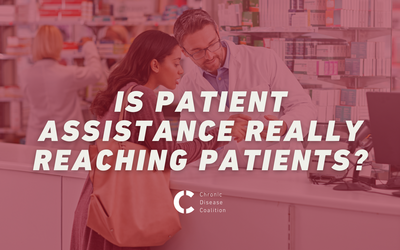
The only thing more complex than health care is paying for health care.
“Charity care” is an umbrella term that can encompass many different programs — implemented by hospitals, drug manufacturers, and others — that are designed to assist low-income patients with high-cost treatments.
Complex 340B programs, copay accumulator bans, and deceptive alternative funding schemes all leave chronic disease patients caught in a tangled web of bureaucracy and profit motives. At the heart of this complex system lies a fundamental issue: patient assistance is too often failing to reach those who need it the most.
The 340B program, intended to provide discounted drugs to certain health care facilities serving vulnerable populations, has become increasingly controversial. Originally designed to help patients access affordable medications, some argue that it has morphed into a mechanism for hospitals to stem the financial bleeding that continues from the pandemic. While some hospitals utilize the savings to expand patient services, others utilize loopholes, diverting funds away from patient care into different priorities. The lack of transparency and accountability in how these savings are allocated undermines the program's original intent, leaving patients without the assistance they desperately need.
Compounding this problem are copay accumulator programs implemented by insurance companies. These programs prevent copay assistance from counting towards patients' deductibles and out-of-pocket maximums, effectively negating the financial support provided by pharmaceutical manufacturers and charitable organizations. As a result, patients are left to shoulder the burden of exorbitant out-of-pocket costs, forcing many to forgo essential medications or delay treatment altogether — and, despite a successful lawsuit deeming these programs illegal, the federal government remains willfully ignorant of the impacts copay accumulator programs have on patients.
Now, alternative funding programs offered by some employers further exacerbate the plight of patients. Under the guise of cost-saving measures, these programs incentivize employers to shift health care expenses, often through reduced coverage — especially for higher-cost treatments — and increased out-of-pocket costs. The insurance plan then directs patients toward patient assistance programs from drug manufacturers — which are limited resources that should serve those who need it most. While touted as a solution to rising health care costs, these schemes disproportionately impact low-income workers and those with chronic conditions, who rely heavily on comprehensive insurance coverage to manage their health.
The common thread among these disparate elements is clear: patient assistance is being systematically diverted, diluted, or denied, leaving vulnerable individuals without access to critical health care services. Instead of alleviating the financial burden on patients, these programs perpetuate a cycle of inequity and injustice within our health care system.
So, what can be done to address these systemic failures and ensure that patient assistance reaches those who need it most?
Well, the CDC prescribes a natural remedy: Sunlight. First and foremost, increased transparency and oversight are essential to hold hospitals and other stakeholders accountable for their use of 340B savings. Additionally, policymakers must enact legislation to ban copay accumulator programs and protect patients from predatory insurance practices.
Furthermore, employers must be educated about the impact of alternative funding programs on employee health and well-being. Rather than prioritizing short-term financial gains, employers should invest in comprehensive health care coverage that meets the needs of all employees, regardless of their health status or socioeconomic status.
Ultimately, the solution lies in a concerted effort to prioritize patient care over profit margins. By dismantling the barriers that obstruct access to affordable medications and essential health care services, we can create a health care system that truly serves the needs of all patients, regardless of their ability to pay.